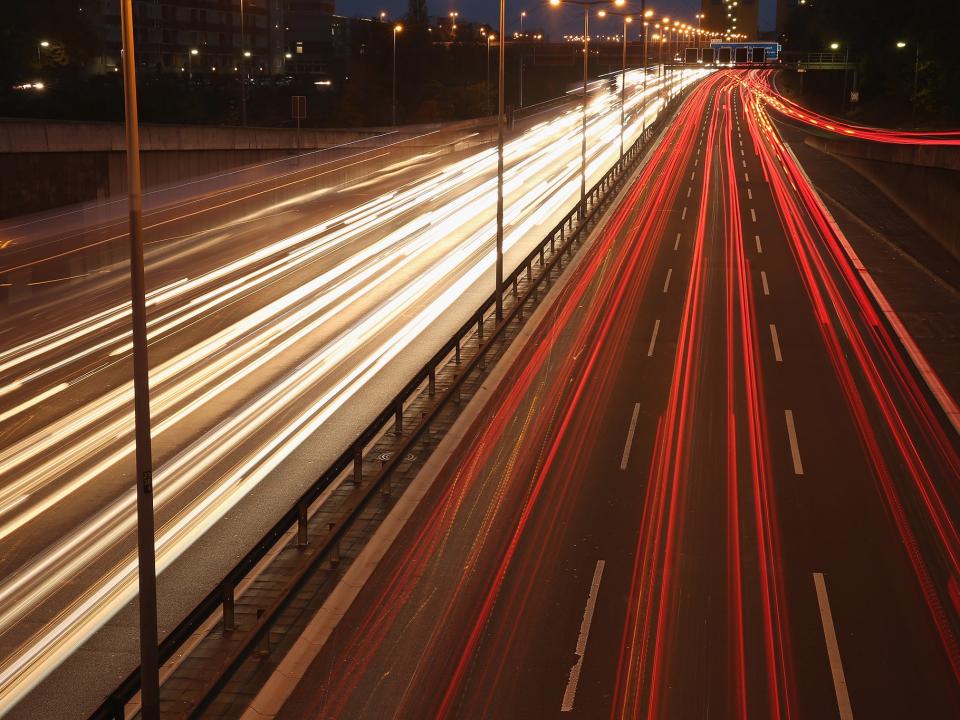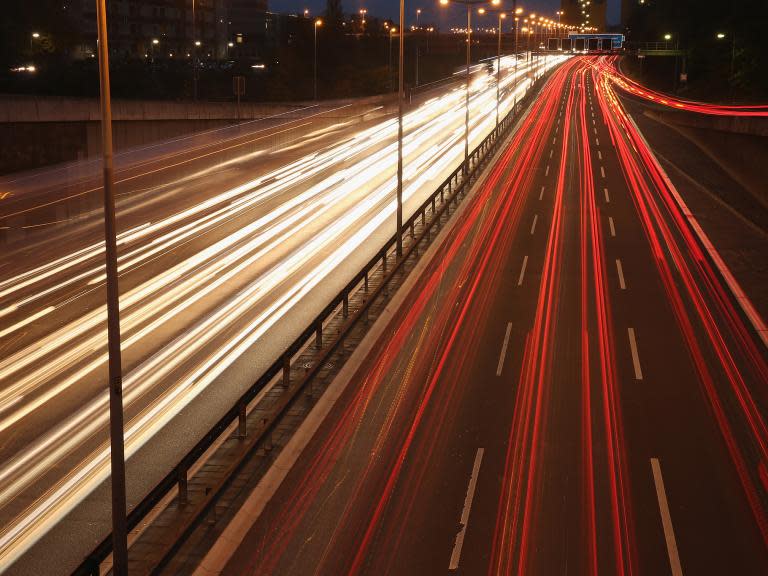‘A little space of freedom’: Germans oppose suggestions of a speed limit on the autobahn
It seemed like a no-brainer: lower Germany’s embarrassingly high carbon emissions at no cost, and save some lives in the process.
But when a government-appointed commission in January dared to float the idea of a speed limit on the autobahn, the country’s celebrated motorway, it almost caused rioting.
Irate drivers took to the airwaves. Union leaders menacingly put on their yellow vests, hinting at street protests. And the far-right opposition used the opportunity to rage against the “stranglehold” of the state.
A speed limit was “contrary to every common sense”, the transport minister, Andreas Scheuer, swiftly declared, contradicting his own experts. And that was that.
As far as quasi-religious national obsessions go for large portions of a country’s population, the German aversion to speed limits on the autobahn is up there with gun control in America, whaling in Japan and sovereignty in Britain.
With few exceptions, like Afghanistan and the Isle of Man, there are motorway speed limits essentially everywhere else in the world.
But this is Germany, the self-declared “auto nation”, where Karl Benz built the first automobile and where cars are not only the proudest export item but also a symbol of national identity.
It’s also the country where, in darker times, Hitler laid the groundwork for a network of multilane roads that in the postwar years came to epitomise economic success – and freedom. Call it Germany’s wild west: the autobahn is the one place in a highly regulated society where no rule is the rule – and that place is sacred.
“It’s a very emotional topic,” says Stefan Gerwens, head of transport and mobility at ADAC, an automobile club with 20 million members, which is opposed to any speed limit. So emotional, apparently, that facts and figures count for little.
Germany is woefully behind on meeting its 2020 climate goals, so the government appointed a group of experts to find ways to lower emissions in the transport sector. Cars account for 11 per cent of total emissions, and their share is rising.
An autobahn speed limit of 75mph, could cover a fifth of the gap to reach the 2020 goals for the transport sector, environmental experts say.
“Of all the individual measures, it is the one that would be the most impactful – and it costs nothing,” says Dorothee Saar, of Deutsche Umwelthilfe, a nonprofit environmental organisation that has lobbied for a speed limit. “But when it comes to cars,” Saar sighed, “the debate tends to become irrational.”
There are already speed limits on almost 30 per cent of roughly 8,000 miles of autobahn, imposed to regulate noise near urban centres and reduce safety risks on roads deemed unfit for unlimited speeding. The number of deadly accidents on stretches of autobahn that have a speed limit are 26 per cent lower than on those without. In 2017, 409 people died on the autobahn and in almost half the cases, the reason was inappropriate speeding, according to the German statistics office.
But that hasn’t swayed public opinion. About half of Germans remain opposed to autobahn speed limits, a proportion that has not budged in the last decade, according to Michael Kunert, director of the polling company Infratest Dimap.
An autobahn speed limit would make a significant minority of “people take to the barricades”, says Kunert. Or at the very least “it would stop them from voting for a party that passed one”.
Once, during the oil crisis in 1973, a German transport minister took his chances and imposed a speed limit. Road deaths stood at over 20,000 a year at the time (six times today’s level), and with oil prices skyrocketing, Lauritz Lauritzen thought Germans might reasonably see the benefits of saving some lives and some money on petrol, too. The speed limit lasted four months, and Lauritzen not much longer.
The experiment gave birth to the “freie fahrt fur freie burger” campaign – or “freedom to drive for free citizens” – the car lobby’s most powerful slogan to this day, and one used by political parties and car companies alike, a sort of unwritten second amendment.
“It’s all about freedom,” says John C Kornblum, a former US ambassador to Germany, who first arrived in the counrty in the 1960s, and has been living (and driving) there on and off ever since “In that sense it really is like gun control,” Kornblum added, albeit with far fewer deaths. “All the rational arguments are there, but there is barely any point in having a rational debate.”
All the rational arguments are there, but there is barely any point in having a rational debate
John C Kornblum, former US ambassador to Germany
The first autobahn was built in 1932 between Cologne and Bonn, but after the Nazis took power, they downgraded that stretch of motorway to a mere “overland road” so Hitler could claim credit for building the autobahn.
In 1937, a 20-year-old John F Kennedy wrote a giddy letter home about his experience of driving on the autobahn with “no speed limit”. A year later, Bernd Rosemeyer, a German racing driver and SS member, used the autobahn for setting speeding records until he crashed into a bridge at over 250mph and died a national hero.
A speed limit was imposed during the Second World War to save petrol, but swiftly scrapped after.
“To many people, the idea of a speed limit feels like an affront to masculinity, like we’re getting softer, we’re degenerating,” says Erhard Schutz, a retired professor and expert on the autobahn’s history.
Today, catering to wealthy visitors from around the world who want to enjoy the thrills of German-style speeding is a big business for tour companies.
“You’re dreaming of driving full-throttle over the German autobahn in a supercar that will blow your mind with absolutely NO SPEED RESTRICTIONS?” one provider asks on its homepage. On offer: an 80-minute drive in a Porsche at €699 (£610), complete with a driving instructor and “fully comprehensive insurance”.
Even a marketing campaign by the German government, long a die-hard supporter of the auto industry, lists a drive on the autobahn as one of “seven things you must do while in Germany”, right up there with visiting Neuschwanstein castle in Bavaria and listening to the Hamburg philharmonic.
Helpfully, the German foreign office also provides a 10-point survival guide to the autobahn. Chief among them: know your limits.
“The left lane is for driving fast, extremely fast,” the guide explains. “Mind the cars bullying slow movers out of the way with indignant honking and incessant headlight flashing.”
To avoid accidents, it continues, always keep a safety distance. What’s a safe distance at, say, 200mph? That, the guide explains, “can easily be calculated by dividing the speed at which you are going by two and leaving that amount in meters between yourself and the car in front of you”. Easy, right?
Kornblum, the former ambassador, remembered taking terrified visiting American diplomats for a drive. “The first reaction is to start screaming, ‘we’re going to die’,” he says. “They just can’t handle it.” Or as the actor Tom Hanks once put it: “No matter how fast you drive in Germany, someone is driving faster than you.”
At the US military airbase at Ramstein, Senior Airman Sara Voigt from Ohio recalled driving on the autobahn for the first time two years ago. Her friend kept telling her she was a safety risk to herself and others – because she was going too slow. “We had to pull over and I switched to the passenger seat,” says Voigt. “It was scary.”
Off the autobahn, Germany remains rife with rules. Some local authorities even dictate the color of sun umbrellas.
“Germany is terribly regulated, for reasons which have to do with the past, with a fear of uncertainty, a fear of being overwhelmed,” says Kornblum. “But then people look for their little spaces of freedom and the autobahn is one of them.”
And speeding isn’t the only freedom the autobahn offers. Driving naked in Germany is legal, too. But if you get out of the car nude, you face a €40 fine.
© The New York Times

 Yahoo News
Yahoo News 

